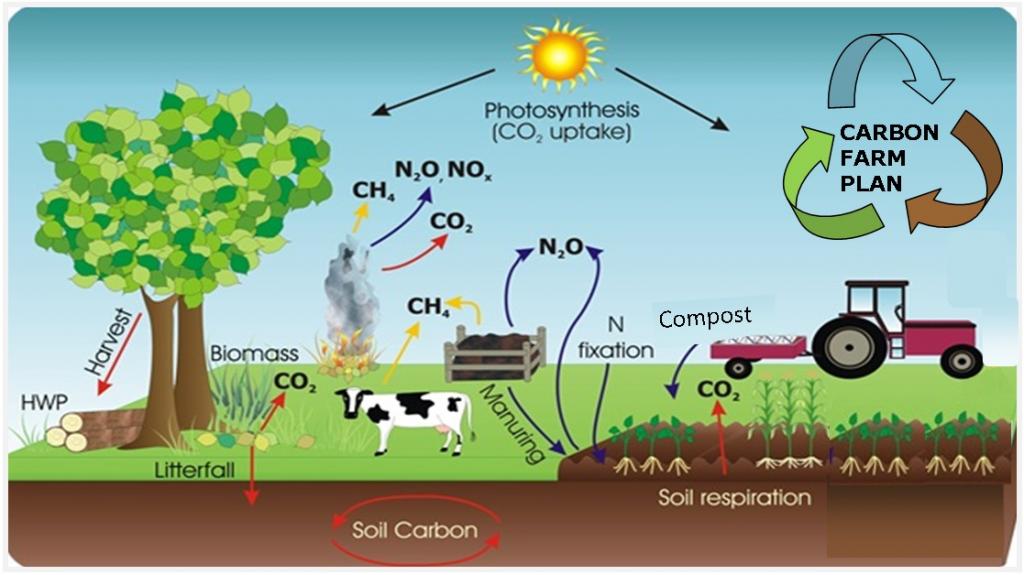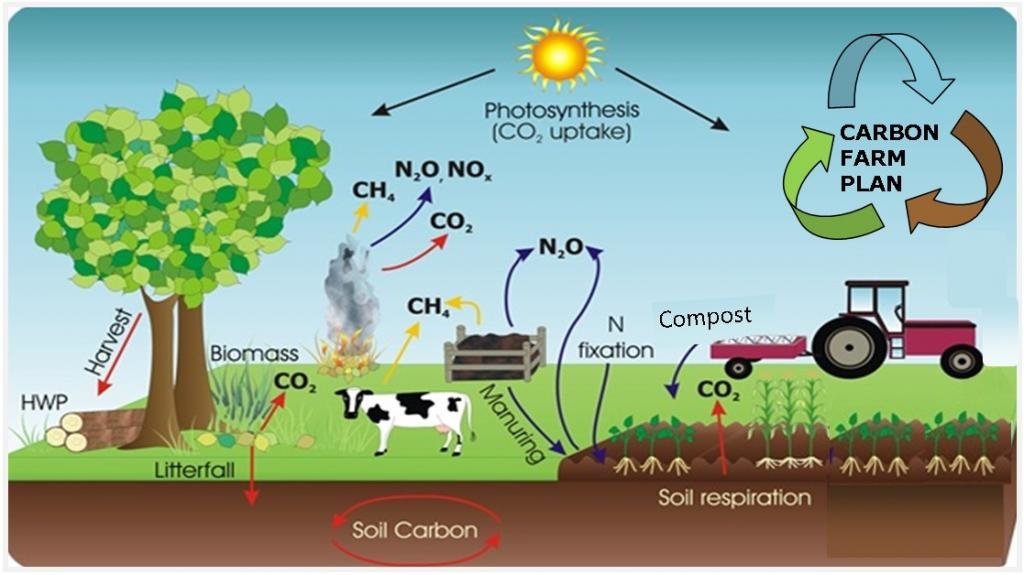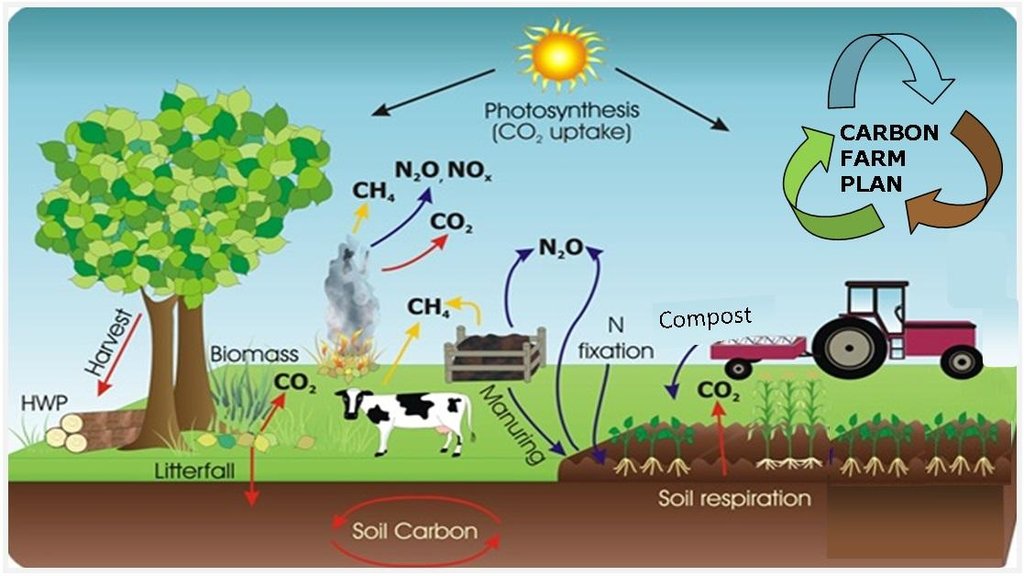Carbon farming [Italy]
- Creation:
- Update:
- Compiler: Nicola Dal Ferro
- Editor: –
- Reviewer: Fabian Ottiger
Carbon farming
approaches_2607 - Italy
View sections
Expand all Collapse all1. General information
1.2 Contact details of resource persons and institutions involved in the assessment and documentation of the Approach
SLM specialist:
Morari Francesco
DAFNAE - University of Padova
Italy
Name of project which facilitated the documentation/ evaluation of the Approach (if relevant)
Preventing and Remediating degradation of soils in Europe through Land Care (EU-RECARE )Name of the institution(s) which facilitated the documentation/ evaluation of the Approach (if relevant)
University of Padova (UNIPD) - Italy1.3 Conditions regarding the use of data documented through WOCAT
When were the data compiled (in the field)?
05/05/2015
The compiler and key resource person(s) accept the conditions regarding the use of data documented through WOCAT:
Yes
1.4 Reference(s) to Questionnaire(s) on SLM Technologies
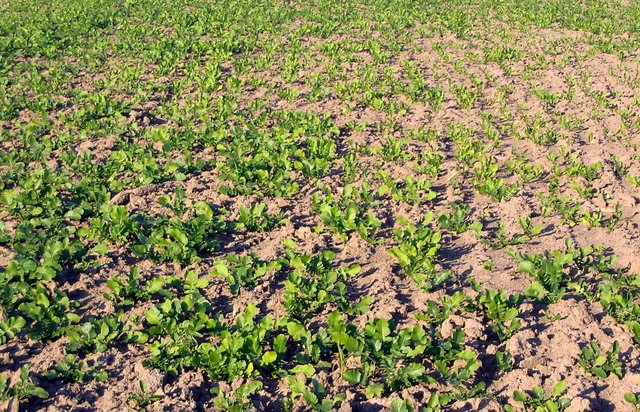
Root-oriented cover crops [Italy]
Cover crops with high root root growth capacity as a practice to improve soil quality
- Compiler: Nicola Dal Ferro
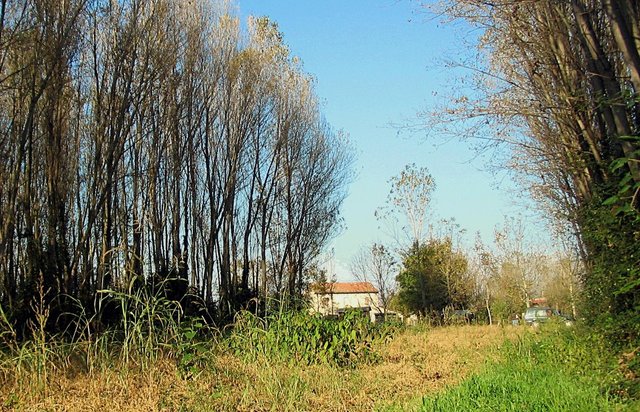
Agroforestry system [Italy]
Silvo-arable systems for production of annual crops on tree plots
- Compiler: Nicola Dal Ferro
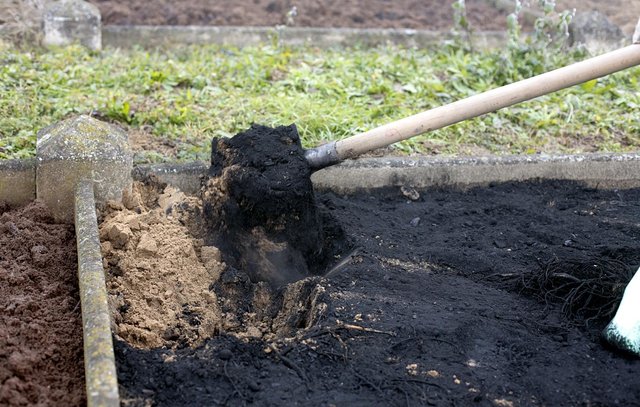
Biochar application as a soil amendment [Italy]
Application of fine-grained charcoal as an amendment to improve the soil quality and mitigate GHG emissions from croplands
- Compiler: Nicola Dal Ferro
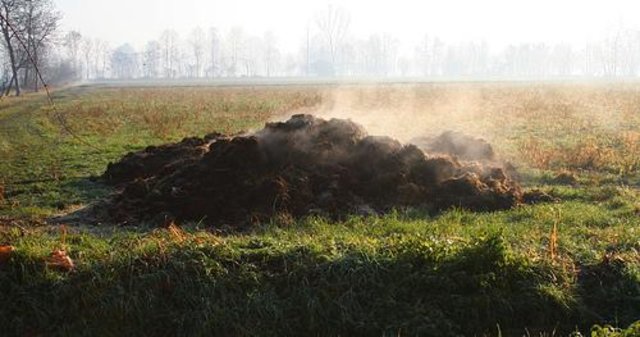
Re-introduction of organic amendments in croplands [Italy]
Re-introduction of biosolids to improve fertility of mineral soils
- Compiler: Nicola Dal Ferro
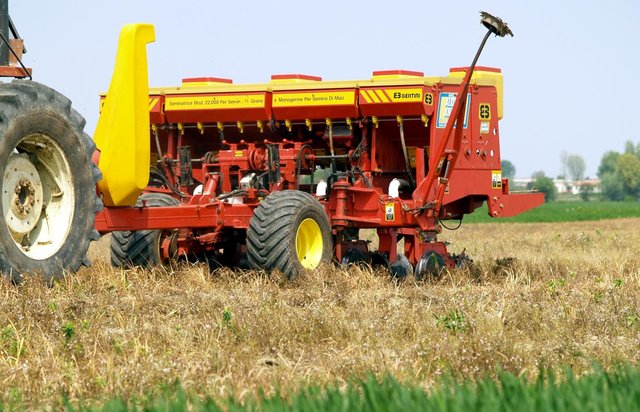
Conservation agriculture [Italy]
Sustainable crop production and residue management under no-tillage to improve soil fertility and increase environmental benefits
- Compiler: Nicola Dal Ferro

Variable rate biosolids management [Italy]
Application of precision farming and variable rate application technology for spatial optimization of organic amendments use
- Compiler: Nicola Dal Ferro
2. Description of the SLM Approach
2.1 Short description of the Approach
Managing land, water, plants and animals to meet the landscape restoration, climate change and food security.
2.2 Detailed description of the Approach
Detailed description of the Approach:
Aims / objectives: Carbon farming seeks to reduce emissions in its production processes, while increasing production and sequestering carbon in the landscape. Carbon farming in the Veneto region has never been applied yet, although it might be proposed as an integrated approach to manage agricultural lands.
Methods: Several strategies can be included in the carbon farming approach, e.g. conservation agriculture, cover cropping, manure application, precision agriculture etc. All these methods have the aim to improve the rate of CO2 removed from the atmosphere and converted to soil organic matter and plant materials. As a result, the final goal is the adoption of land management practices in which carbon gains exceed carbon losses.
Stages of implementation: Carbon farming initiative has never been adopted in Italy and in the Veneto region, although it has been proposed worldwide (e.g. Australia, US). Neverthless, it might be a new way to implement low-impact agricultural activities.
Role of stakeholders: Stakeholders may be involved in the evaluation of the best practices to reduce carbon emissions in the atmosphere as well to increase/maintain crop productivity.
2.3 Photos of the Approach
2.5 Country/ region/ locations where the Approach has been applied
Country:
Italy
Region/ State/ Province:
Veneto region
2.7 Type of Approach
- project/ programme based
2.8 Main aims/ objectives of the Approach
The Approach focused on SLM only
Reduce emissions in the production processes while increasing production and sequestering carbon in the landscape
The SLM Approach addressed the following problems: The main problem to be addressed by this approach is the loss of soil organic matter and generally the loss of soil quality. Moreover, by adopting low-impact agricultural practices in the context of the Carbon Farming approach would favour a reduction in CO2 emissions.
2.9 Conditions enabling or hindering implementation of the Technology/ Technologies applied under the Approach
social/ cultural/ religious norms and values
- hindering
Treatment through the SLM Approach:
availability/ access to financial resources and services
- hindering
Some technologies need initial investment for their application
Treatment through the SLM Approach: Subsidies
knowledge about SLM, access to technical support
- hindering
Tchnical expertise and knowledge on several technolgies is requested
Treatment through the SLM Approach: Continuing education
3. Participation and roles of stakeholders involved
3.1 Stakeholders involved in the Approach and their roles
- local land users/ local communities
- teachers/ school children/ students
- local government
Regional government of Veneto
- national government (planners, decision-makers)
- international organization
EU
3.2 Involvement of local land users/ local communities in the different phases of the Approach
| Involvement of local land users/ local communities | Specify who was involved and describe activities | |
|---|---|---|
| initiation/ motivation | interactive | |
| planning | external support | |
| implementation | external support | |
| monitoring/ evaluation | external support | |
| Research | interactive |
3.4 Decision-making on the selection of SLM Technology/ Technologies
Specify who decided on the selection of the Technology/ Technologies to be implemented:
- mainly SLM specialists, following consultation with land users
Explain:
This approach is not yet applied in Italy, but some experiences are from other countries (e.g. USA, Australia)
4. Technical support, capacity building, and knowledge management
4.1 Capacity building/ training
Was training provided to land users/ other stakeholders?
Yes
Specify who was trained:
- land users
- field staff/ advisers
Subjects covered:
Climate change, sustainable land management strategies, administrative aspects, project planning and implementation.
4.2 Advisory service
Do land users have access to an advisory service?
Yes
Specify whether advisory service is provided:
- on land users' fields
Describe/ comments:
Name of method used for advisory service: Authorised advisory services, public and private; Key elements: Objectives , Project design, Administrative support
4.3 Institution strengthening (organizational development)
Have institutions been established or strengthened through the Approach?
- yes, moderately
Specify the level(s) at which institutions have been strengthened or established:
- local
4.4 Monitoring and evaluation
Is monitoring and evaluation part of the Approach?
Yes
Comments:
bio-physical aspects were ad hoc monitored by land users through observations
bio-physical aspects were regular monitored by project staff through measurements
technical aspects were regular monitored by land users through observations
socio-cultural aspects were regular monitored by government through measurements
economic / production aspects were regular monitored by land users through observations
economic / production aspects were ad hoc monitored by project staff through measurements
no. of land users involved aspects were regular monitored by government through observations
management of Approach aspects were regular monitored by government through observations
There were several changes in the Approach as a result of monitoring and evaluation: The approach should be continuously updated after continuous monitoring
4.5 Research
Was research part of the Approach?
Yes
Specify topics:
- economics / marketing
- ecology
- technology
Give further details and indicate who did the research:
Research institutes, government
5. Financing and external material support
5.1 Annual budget for the SLM component of the Approach
If precise annual budget is not known, indicate range:
- 100,000-1,000,000
Comments (e.g. main sources of funding/ major donors):
Approach costs were met by the following donors: local government (district, county, municipality, village etc): 100.0%
5.2 Financial/ material support provided to land users
Did land users receive financial/ material support for implementing the Technology/ Technologies?
Yes
5.3 Subsidies for specific inputs (including labour)
- equipment
| Specify which inputs were subsidised | To which extent | Specify subsidies |
|---|---|---|
| machinery | partly financed | |
| tools | partly financed | |
- agricultural
| Specify which inputs were subsidised | To which extent | Specify subsidies |
|---|---|---|
| seeds | partly financed | |
| fertilizers | partly financed | |
If labour by land users was a substantial input, was it:
- paid in cash
6. Impact analysis and concluding statements
6.1 Impacts of the Approach
Did the Approach help land users to implement and maintain SLM Technologies?
- No
- Yes, little
- Yes, moderately
- Yes, greatly
By adopting an holistic approach that should integrate several aspects with the aim to imporve soil fertility, soil C and reduce CO2 emissions.
Did other land users / projects adopt the Approach?
- No
- Yes, little
- Yes, moderately
- Yes, greatly
The approach has been adoipted in USA and Australia
Did the Approach lead to improved livelihoods / human well-being?
- No
- Yes, little
- Yes, moderately
- Yes, greatly
By making the agricultural system more efficient
6.2 Main motivation of land users to implement SLM
- increased profit(ability), improved cost-benefit-ratio
- payments/ subsidies
- prestige, social pressure/ social cohesion
- environmental consciousness
6.4 Strengths/ advantages of the Approach
| Strengths/ advantages/ opportunities in the land user’s view |
|---|
| Improvement of soil fertility (How to sustain/ enhance this strength: Subsidies) |
| Strengths/ advantages/ opportunities in the compiler’s or other key resource person’s view |
|---|
| Reducing agricultural impacts on CO2 emissions as well as increasing the SOC content (How to sustain/ enhance this strength: Technical support ) |
6.5 Weaknesses/ disadvantages of the Approach and ways of overcoming them
| Weaknesses/ disadvantages/ risks in the compiler’s or other key resource person’s view | How can they be overcome? |
|---|---|
| SOC content in the short-term is difficult to quantify, thus restricting the abuility to demonstrate the positive impacts |
7. References and links
7.1 Methods/ sources of information
- field visits, field surveys
- interviews with land users
7.2 References to available publications
Title, author, year, ISBN:
The integration of biodiversity and climate change: A contextual assessment of the carbon farming initiative, Van Oosterzee P., 2012Carbon farming Iniitiative, Australian government - Dept. of Environment
Available from where? Costs?
climatechange.gov.au
Title, author, year, ISBN:
Carbon farming Iniitiative, Australian government - Dept. of Environment
Available from where? Costs?
climatechange.gov.au
Links and modules
Expand all Collapse allLinks

Root-oriented cover crops [Italy]
Cover crops with high root root growth capacity as a practice to improve soil quality
- Compiler: Nicola Dal Ferro

Agroforestry system [Italy]
Silvo-arable systems for production of annual crops on tree plots
- Compiler: Nicola Dal Ferro

Biochar application as a soil amendment [Italy]
Application of fine-grained charcoal as an amendment to improve the soil quality and mitigate GHG emissions from croplands
- Compiler: Nicola Dal Ferro

Re-introduction of organic amendments in croplands [Italy]
Re-introduction of biosolids to improve fertility of mineral soils
- Compiler: Nicola Dal Ferro

Conservation agriculture [Italy]
Sustainable crop production and residue management under no-tillage to improve soil fertility and increase environmental benefits
- Compiler: Nicola Dal Ferro

Variable rate biosolids management [Italy]
Application of precision farming and variable rate application technology for spatial optimization of organic amendments use
- Compiler: Nicola Dal Ferro
Modules
No modules


